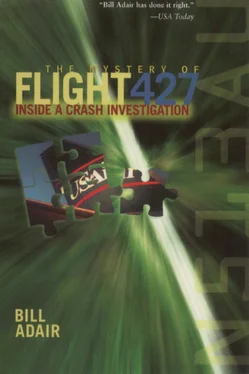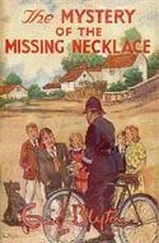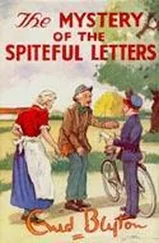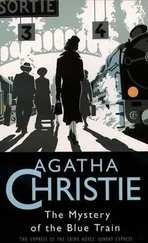The papers also gave Germano crucial information about the plane’s weight and the speed necessary to get off the ground. The plane would be carrying 11 tons of people and 3,700 pounds of cargo. The aircraft and its contents would weigh 115,000 pounds as it roared down the O’Hare runway. It would need to go at least 138 knots, or 159 miles per hour, to get airborne.
At the bottom of the main page, Germano saw this statement:
I HEREBY ACKNOWLEDGE RECEIPT OF THIS FLIGHT PLAN AND NECESSARY ATTACHMENTS AND CONSIDER ALL CONDITIONS INCLUDING MY PHYSICAL CONDITION SUITABLE FOR THIS FLIGHT. I HAVE ADEQUATE KNOWLEDGE OF ALL FACTORS AFFECTING THE ROUTE, WEATHER, NAVIGATION, COMMUNICATIONS, TERRAIN, OBSTRUCTIONS AND ALL APPLICABLE PROCEDURES AND REGULATIONS.
Germano printed his name and his USAir employee number, then signed his name. The lives of 131 people on board were now his responsibility.
As the passengers stuffed their carry-on luggage into the overhead bins, baggage handlers filled the belly of the plane with 1,700 pounds of luggage and a ton of Business Week magazines that were ultimately headed to subscribers in the Carolinas. The flight was running about fifteen minutes late, so USAir mechanic Tim Molloy had extra time to walk around the plane and make sure it was safe. He circled Ship 513 twice, checking the tires, the wings, the rudder, the tubes that measure airspeed, and the fluid levels for the hydraulic systems. He made sure all the cargo doors were locked. No problems. The plane looked fine.
Either Molloy or mechanic Mark Kohut pushed the plane back with a USAir tractor—neither of them remembers who performed which task—and told the pilots by intercom that it was safe to start the engines. The mechanic then stood away from the plane and snapped the pilots a salute. Flight 427 was on its way.

2. ZULU
The cockpit in Ship 513 was identical to every other USAir 737. With pilots switching planes two or three times a day, it was crucial that the instruments and controls be in exactly the same place in all the planes. The cockpit seemed to be filled with a hundred clocks. It was possible to equip 737s with more modern computer screens, but USAir chose to stick with the older-style “steam gauges” so that all its planes would be standardized.
The walls and panels of the cockpit were gray, a neutral color that allowed pilots to see the dials more easily. There were two seats with sheepskin covers, for the captain and the first officer, plus the fold-down jump seat behind them that could be used by Federal Aviation Administration inspectors or pilots hitching a ride from one city to another. A sign on the back wall of the cockpit said: LIQUOR TAX HAS BEEN PAID, a requirement because the airline served alcohol. The cockpit door had a small mirror on the inside so the pilots could straighten their hats and ties before saying hello or good-bye to passengers.
Many people who earn more than $100,000 a year have spacious offices, but not airline pilots. They work in a room smaller than a bedroom closet. The 737 cockpit is a familiar, comfortable place to them, however. The controls and instruments are laid out very logically. The most important controls are directly in front of the pilots—the rudder pedals and the wheel/control column. The most important gauges—airspeed, altitude, the attitude indicator, and the compass/navigational dial—form a T in the center of each pilot’s instrument panel. Switches and levers that are used less frequently are placed farther away. The circuit breaker panel, which is not used very often, is directly behind the seats. Above the pilots’ heads is a small compartment with an escape rope so they can climb out a window and slide down the fuselage if the cockpit door is blocked. Hidden beneath the jump seat is an ax, which pilots can use to chop into an electrical panel during a fire or to break out of wreckage after a crash.
By standardizing cockpits, the airlines are encouraging repetition. If pilots perform the same task repeatedly, it should become so automatic that they don’t make mistakes. That’s also the rationale behind requiring them to use checklists—to make sure that they flip each lever the same way, in the same order, on every flight. Checklists are no guarantee that a crew won’t screw up—the checklists themselves can become so rote that pilots race through them without doing what the list calls for—but when used properly they provide a good tool for helping the pilots go through the tasks consistently. Standardization is crucial because captains and first officers may never have flown together before. Pilots pick their trips based on their own personal schedules and their favorite cities, so the selection of a copilot is usually just a matter of luck. (A prized USAir trip was Baltimore–St. Thomas–St. Croix–Baltimore, which had a 25–hour overnight at a nice resort in St. Croix; the least popular were the red–eyes, such as the 2 A.M. Los Angeles–to–Pittsburgh flight.)
Germano and Emmett had been through the 737 checklists thousands of times and could probably have recited them from memory. But before the plane departed, the pilots were still required to go through them point by point. The lists had a unique rhythm, like a rap song with two singers alternating back and forth:
Fuel quantity?
15–6 required; 15–6 on board.
Oil and hydraulic quantities?
Checked and checked.
Fuel panel?
Set.
Seat belt sign?
On.
Window heat?
On.
Hydraulics?
A’s off; B’s on.
Pressurization?
Set.
On each flight the captain and first officer trade off the tasks of flying the plane and communicating with air traffic controllers, thus spreading the workload evenly and assuring that they both get a chance to fly. But a distinct pecking order is still in effect. The captain, whose uniform carries four stripes on the shoulder epaulets, has the ultimate responsibility. If the captain thinks that anything about the plane is unsafe, the flight won’t leave. Likewise, only the captain has the authority to abort a takeoff.
The top job comes with a few perks. USAir 737 captains made about $160,000 a year in 1994, whereas first officers made $110,000. Also, the captain traditionally gets to sit inside the cockpit while the first officer performs the walk-around inspection outside the plane, which can be a miserable task during rain or snow.
Germano, from Moorestown, New Jersey, was forty-five years old and had been flying since he was seventeen. He flew for the New York State Air National Guard and began his airline career with Braniff Airways in 1976. He started with USAir in 1981, initially as a flight engineer on the Boeing 727, then as first officer on the BAC-111 and then as first officer and captain on the 737. He was an accomplished pianist, had been married for nineteen years, and had two daughters, ages three and nine.
Emmett, who was thirty-eight, also began flying as a teenager. He started his career by flying corporate planes and in 1987 joined Piedmont Airlines, which was bought by USAir two years later. He was married and lived in the Houston suburb of Nassau Bay. He loved to sail, and he drove a Corvette with the Texas license plate 1USAIR. At six feet four, he was one of the tallest USAir pilots.
It was Emmett’s turn to fly, so Germano would be handling radio duties on the leg to Pittsburgh. Assuming that they followed standard airline procedures—as virtually every USAir pilot did—the taxiing and takeoff would have gone like this:
After one of the mechanics pushed the plane back with a tractor, Emmett turned the ignition switch and Germano moved a lever to start the No. 2 engine, the one on the right wing. After waiting about forty seconds for the engine to spool up, the pilots started No. 1. Germano moved a lever to engage the parking brake until they were cleared to leave. Emmett set the flaps on the wings to provide the extra lift it would take to get the plane airborne. (It is crucial to set the flaps. Two crashes in the late 1980s were the result of pilots’ forgetting to set them.)
Читать дальше













